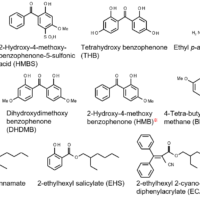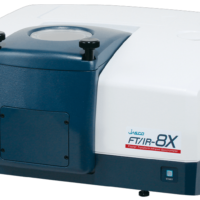Introduction
Aflatoxins are a group of mycotoxins produced by microorganisms such as Aspergillus flavus, Aspergillus parasiticus and Aspergillus nomius living in tropical or subtropical regions and have a strong carcinogenic affect. It has been reported that higher levels of aflatoxins are often found which exceed the safe levels laid down by food safety agencies such as the FDA in wide variety of food products including fruits, pulses, grains and spices.
Present regulations require that total aflatoxins (sum of aflatoxin B1, B2, G1 and G2) must be lower than 10 μg/kg. A precolumn derivatization method that uses trifluoroacetic acid (TFA) in combination with HPLC with fluorescence detection offers greatly improved sensitivity for aflatoxins B1 and G1.
This article shows the example of aflatoxin analysis by HPLC and UHPLC.

LC-4000 UHPLC system
Experimental
Chromatographic conditions
<HPLC>
Column: YMC-Triart C18 (4.6 mm I.D. x 150 mmL, 5 µm)
Eluent A: Water/Methanol/Acetonitrile (60/30/10)
Eluent B: Acetonitrile
Gradient Condition (A/B): 0.00 min (100/0) -> 15.00 min (100/0) -> 15.05 min (0/90) -> 20.00 min (0/90) -> 20.05 min (100/0) 1 cycle; 35.5 min
Flow Rate: 1.0 mL/min
Column Temperature: 40 °C
Detection: Fluorescence detection (Ex. 365 nm, Em. 450 nm)
Injection Volume: 20 μL
Standard Sample: Mixture of aflatoxin B1, B2, G1, and G2 (0.5~10 µg/L each)
<UHPLC>
Column: X-PressPak V-C18-WL (3.0 mm I.D. x 75 mmL, 2 µm)
Eluent A: Water/Methanol/Acetonitrile (65/18/17)
Eluent B: Acetonitrile
Gradient Condition (A/B): 0.00 min (100/0) -> 3.50 min (100/0) -> 3.55 min (0/90) -> 4.50 min (0/90) -> 4.55 min (100/0) 1cycle; 7.5 min
Flow rate: 0.8 mL/min
Column Temperature: 40 °C
Detection: Fluorescence detection (Ex. 365 nm, Em. 450 nm)
Injection Volume: 5 μL
Standard Sample: Mixture of aflatoxin B1, B2, G1, and G2 (0.5~10 µg/L each)
Structure
Aflatoxin B1, B2, G1 and G2 are compounds that yield native fluorescence. However, the fluorescence intensity of B1 and G1 is much less in comparison to that of B2 and G2 and accordingly, the sensitivity of B1 and G1 must be improved by changing from the natural form into a hydroxidized form using TFA derivatization. The structure of aflatoxin B1, B2, G1 and G2 and the structure of derivatized B1 and G1 are shown in Figure 1.

Figure 1. Structure of aflatoxin B1, B2, G1, G2 and TFA-derivatized B1 and G1
Derivatization
The procedures for TFA derivatization of the standard mixture of aflatoxins are shown in Figure 2.

Figure 2. TFA derivatization
Results
The chromatograms of standard mixtures of TFA-derivatized aflatoxins (each of 5.0μg/L) are shown in the Figure 4 [by conventional HPLC (upper), by UHPLC (lower)]. The separation is completed within 12 minutes by conventional HPLC and within the 3.5 minutes by the UHPLC.

Figure 3. Chromatograms of standard mixture of aflatoxins (5.0 μg/L each, TFA derivatized) 1=Aflatoxin G1, 2=Aflatoxin B1, 3=Aflatoxin G2, 4=Aflatoxin B2
The linearity of the standard mixtures of aflatoxins (0.5 to 10 μg/L) with excellent correlation (more than 0.9997) was achieved for both conventional HPLC and UHPLC.
Good reproducibility including the TFA derivatization procedure (N = 6) was obtained for the conventional HPLC of better than 0.2% RSD and 3% RSD in peak retention time and area, respectively. The UHPLC also yielded good reproducibility with better than 0.2% RSD and 3.5% RSD in peak retention time and area, respectively. The 1.0ug/L of standard mixture of aflatoxins was used for this estimation.






